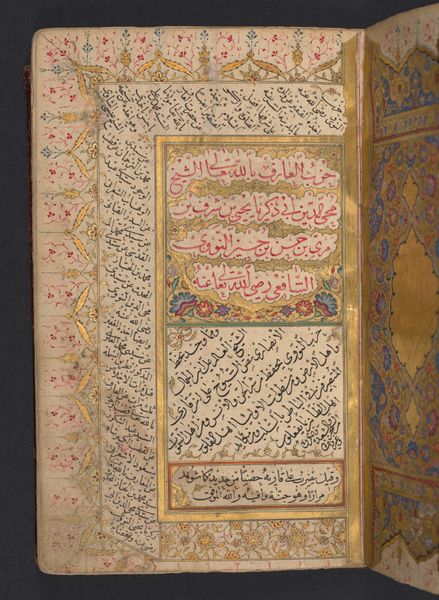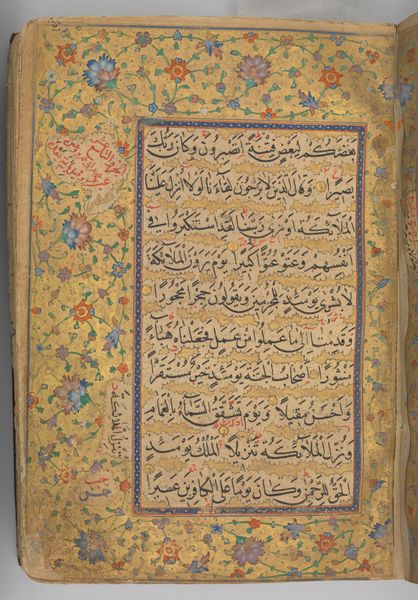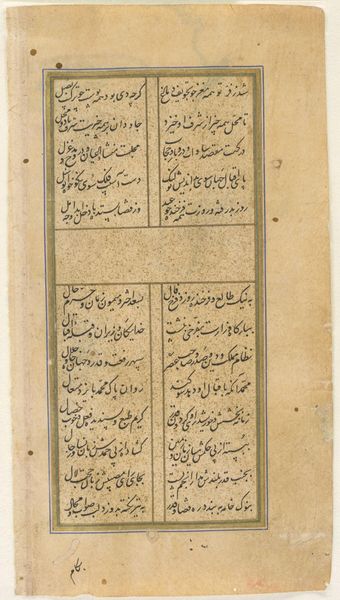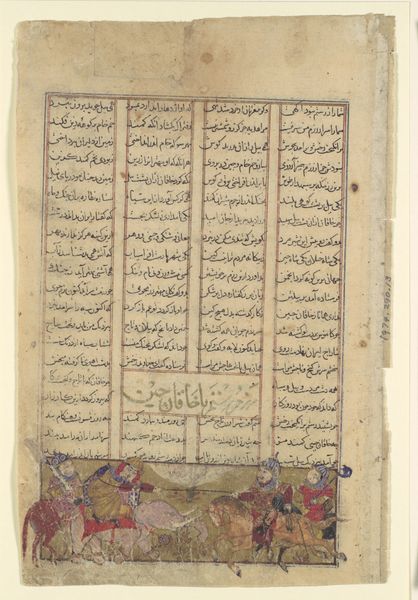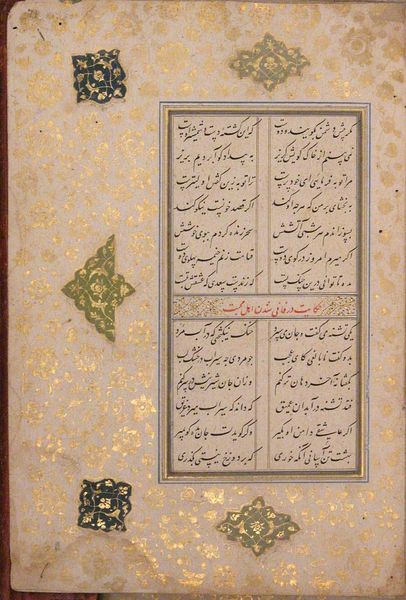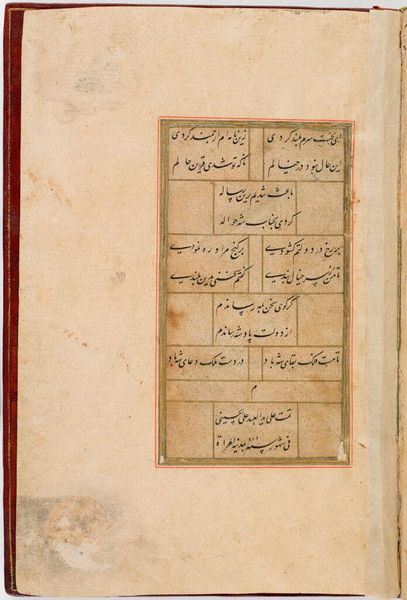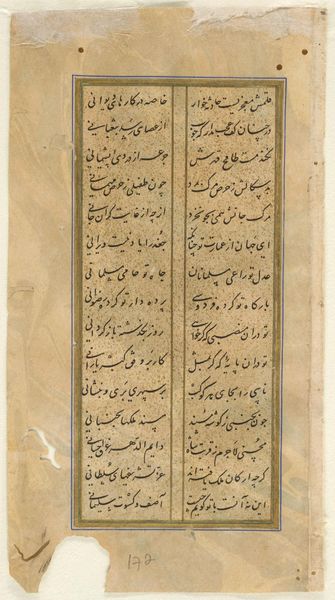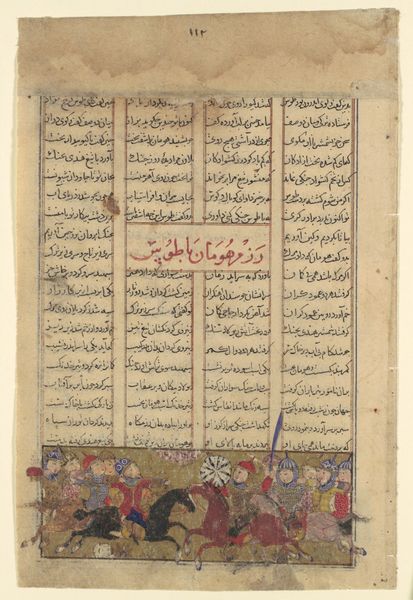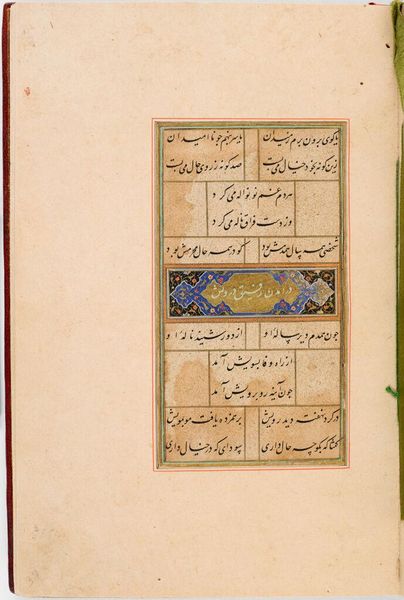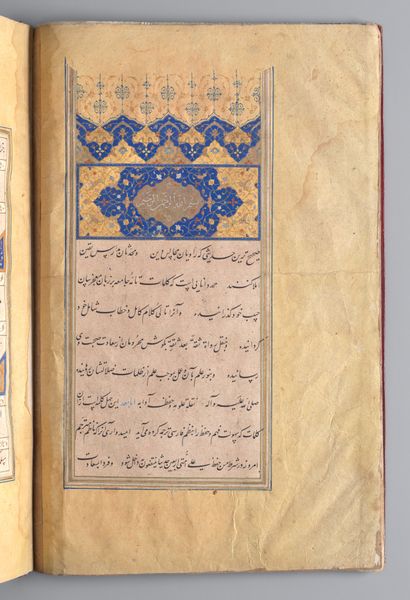
Futuh al-Haramain (Description of the Holy Cities) 1525 - 1575
0:00
0:00
drawing, paper, ink
#
drawing
#
paper
#
ink
#
islamic-art
Dimensions: H. 8 3/8 in (21.3 cm) W. 5 1/4 in. (13.3 cm)
Copyright: Public Domain
Curator: Welcome, everyone. Today, we are observing a folio from "Futuh al-Haramain (Description of the Holy Cities)," likely created between 1525 and 1575 by Muhi al-Din Lari. This delicate piece combines ink and drawing on paper. It now resides at the Metropolitan Museum of Art in New York. Editor: Wow. Immediately, I’m struck by the sense of serenity. The colors are so calming, the intricate details, even the composition seems to radiate a peaceful quality. Curator: That's a perceptive observation. These artistic elements are deliberate. The arabesque designs, particularly in the archway, echo architectural motifs found in sacred spaces, intended to visually evoke the divine. The calligraphy, of course, further anchors its spiritual significance. Editor: The script feels almost alive, as if the letters themselves contain meaning beyond just the words. Is it common for art like this to blend text and image so seamlessly? Curator: Indeed. Islamic art has a rich tradition of intertwining calligraphy with ornamentation. Here, the script not only conveys sacred texts but also acts as a visual element, contributing to the overall harmony of the design. Think of it as layers of meaning. Editor: I see that. So, it's not just what the words say, but how they look and feel on the page. Like visual poetry. Curator: Precisely. Moreover, the architectural accuracy presented here, while stylized, gives insight into the contemporary understandings of the Holy Cities themselves, thus blending art, faith, and geographical representation into a powerful visual declaration of Islamic cosmology and praxis. Editor: Thinking about this as a cultural memory is wild, knowing this book served not just as an artistic artifact, but a source of inspiration and maybe a how-to for future pilgrims to the Holy Cities. Curator: And even to those who could never journey physically to Mecca and Medina, works such as these made sacred experiences accessible through sight and study. Editor: I can almost hear the whispering chants as one turned the page. Thanks to you, I feel as though this page is a portal connecting the terrestrial with the ethereal. Curator: The work leaves one with the sense of cultural depth held within an artistic expression, acting as a testament to the beauty of faith as well as an articulation of enduring principles.
Comments
No comments
Be the first to comment and join the conversation on the ultimate creative platform.
